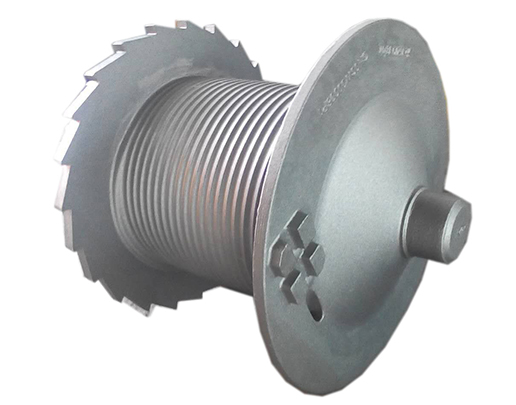The manufacturing process of Dalian castings is divided into two stages: mold manufacturing and casting. Mold is the foundation of casting and directly affects the quality and efficiency of products. When casting, the casting material is first heated to a liquid state, and then the liquid casting material is poured into the mold, waiting for the casting material to cool and solidify to form a part. The defects of castings include pores, inclusions, shrinkage cavities, cracks, etc., which can affect the actual use effect of castings. Therefore, it is necessary to control and prevent them as much as possible during the casting process.
There are various types of castings, including steel castings, cast iron castings, alloy castings, die castings, etc. Among them, steel castings are commonly used to manufacture high load, high strength, and high toughness components, such as aviation engines, petroleum machinery, heavy engineering machinery, etc. Cast iron parts are commonly used in the manufacturing of transmission components, mechanical casing, automotive components, etc. Alloy castings have excellent properties such as high strength, high heat resistance, and high corrosion resistance, and are commonly used in high-end fields such as aviation engines, spacecraft, ships, and military products. Die castings are mainly used for manufacturing small and precision components, such as mobile phone casings, automotive components, etc.
What are the common quality problems in Dalian casting production? How to solve it?
Shrinkage is one of the common quality problems in the casting process, which is caused by the shrinkage of liquid metal during the cooling process. Shrinkage can be solved by increasing the gate area, changing the pouring method, and strengthening the cooling of the casting. For severe shrinkage problems, repair or recasting methods can be used to address them.
Porosity is also one of the common quality problems in the casting process, which is caused by the incomplete discharge of gases in the molten metal. Pores can be solved by improving the casting process, reducing the gas content in the metal, and using vacuum casting methods. For severe porosity problems, pressure copper infiltration or other methods can be used to repair.
The issue of porosity is also one of the quality problems often encountered in the casting process, which is caused by the formation of residual voids during the shrinkage process of liquid metal solidification. The problem of porosity can be solved by improving the casting process, improving melting quality, and adopting more suitable pouring temperatures. For severe loosening problems, pressure copper infiltration or other methods can be used for treatment.
The production process of casting parts mainly includes steps such as mold manufacturing, melting metal, casting forming, cooling, separation, deburring, cleaning, and inspection. Mold is the key to the production of castings, and its manufacturing quality and accuracy directly affect the forming quality of castings. Melting metal requires mastering certain process techniques to achieve appropriate casting temperature and metal composition. Casting forming is the core step of casting production, which requires precise control of pouring volume and pouring speed to ensure the compactness and uniformity of the internal structure of the casting. Cooling, separation, deburring, cleaning, and other steps are essential processes in the production of castings to ensure surface quality and accuracy, and to avoid affecting their performance and service life due to defects such as pores and inclusions cast inside the castings.
Magnetic particle testing is a common method for inspecting surface defects in castings. This is a non-destructive test that uses two elements, magnetic force and iron powder, to identify defects on the surface of castings. When iron powder is placed on the surface of the casting, magnetic force will adsorb the iron powder at the defect, which can identify surface deformations and cracks that are difficult to detect.






